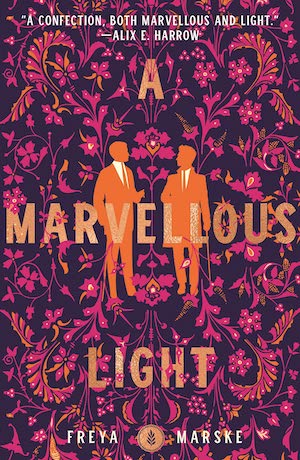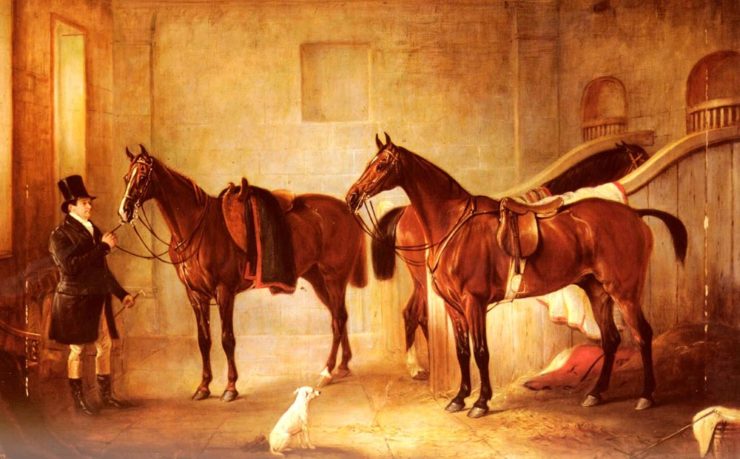I’ll do a post another time about the history of saddles, and historical saddles. That’s quite a bit of fun and great for designing fantasy horse gear. Here, I’ll cover the basic principles and the standard types and styles of the here and now—in short, the kinds of saddles you’ll find in a tack shop near you.
The purpose of a saddle is simple. It serves as a buffer between the rider and the horse. It offers the rider something to hang on to, and gives the horse some protection against the rider’s seat and balance, or lack thereof.
There’s a great deal of myth and romance about riding bareback and, if you’re hard core, bridleless. That’s perfection, right? Nothing between you and the horse. No equipment to get in the way. No bit, no saddle. Just you and your magical steed.
It is true that every serious rider should at least pick up the basics of riding bareback. It’s a real test of balance and gives you an unparalleled level of feel for the horse. However, not every horse is comfortable to ride bareback (or is comfortable with being ridden bareback), and not every rider has either the skill or the physical capability for it. Hence, the saddle.
There are many different types and designs of saddles. The most basic of all is the bareback pad: as it says on the tin, a fairly thin, padded cushion held on with a strap under the horse’s belly. Sometimes it comes with stirrups attached, but those aren’t terribly safe; if the pad rolls, the rider’s foot can get caught, and they may be throw off the horse and dragged. Better to go with the bare-bones version. The advantage it offers over bareback is some padding of the sometimes sharp equine spine, and protection against dirt, sweat, and horsehair.
Saddles themselves, as a rule, come in two forms: with a tree or without. A saddle tree is a rigid frame around which the saddle is built, shaped to the conformation of the horse’s back. A treeless saddle has the structure without the frame. It’s more flexible and, according to aficionados, gives a subtler feel for the horse’s back and movement. It’s also easier to fit, somewhat similar to sneakers as opposed to dress shoes. The down side is that over time it can cause back soreness in the horse.
But then, a poorly fitted saddle with a tree can do that and worse. If it’s too narrow it pinches. If it’s too wide it presses down on the horse’s back and withers. If it’s not shaped properly for the shape of the horse, just like shoes, again, it can make movement painful and cause blisters and pressure sores.
Buy the Book


A Marvellous Light
A saddle that fits well sits smoothly on the horse’s back, allows freedom of movement, and positions the rider optimally for whatever discipline the saddle is designed for. Of which there are a fair number.
Most non-horsepeople in the U.S., when I say saddle, tend to think of the “cowboy saddle,” more properly called a Western saddle. That’s the one with the saddle horn that one sees in movies, and it’s the usual saddle you’ll see at a rent-a-horse place. It’s big, it tends to be heavy (though modern synthetics have reduced the weight significantly), and it’s got a high front (pommel) and a high back (cantle). The horn has a number of uses, for looping the rope around when roping cattle, for holding on to when the horse moves quickly on the trail or when cutting a cow, for hanging the odd bit of useful thing: a rope, a canteen.
The advantage of a Western saddle for the rider is that it’s solid and secure. It’s designed to be ridden in all day. For the horse, it spreads the rider’s weight over a broad surface area, and it minimizes the effects of poor balance and hard bounce when the horse moves. It’s a working saddle, and it’s proud of its origins on the ranches and ranges of the West.
It pretties itself up awfully well, too. The basic cowboy model may have no ornamentation at all, but show and parade saddles are masterpieces of the leatherworker’s art. But they’re still, at base, meant to be ridden in, in comfort for both horse and rider.
The other common type of saddle in North America may be referred to as an “English” saddle. That’s a much smaller saddle with a more minimalist design, and there’s no horn. It’s meant for riding in show classes and in the schooling arena; while English riders may go out all day, they’re focused not on ranch work but on schooling the horse.
The “English” saddle is designed to be lightweight, and to place the rider in the optimal position for a particular discipline. There are several types, with variations within the types. A jumping saddle, also known as a close-contact saddle, sits close to the horse’s withers, and positions the rider up and forward for ease of riding over a fence. A dressage saddle sits farther back, clearing the shoulders, and positions the rider more or less upright, poised over the horse’s center of balance. A hybrid form, the all-purpose saddle, allows the rider a bit more flexibility in riding either forward or upright.
There are other forms as well. The racing saddle, extremely lightweight and with very short stirrups, and a girth over the top of the saddle as well as around the horse’s undercarriage, for security at high speed. The saddle-seat saddle, very wide and flat and seated well back on the horse, for riding the big-moving show horses. The Australian stock saddle, usually without a horn, intended for all-day riding in a fairly upright position. The Iberian saddle, designed for bullfighting, for working cattle, and for dressage and high-school riding.
All of these saddles serve the same ultimate purpose, to make riding more comfortable for both horse and rider. Some, like the saddle-seat saddle, may be placed directly on the horse’s back, but most have additional buffering in the form of blankets or pads. These can be cut or shaped to accommodate the horse’s conformation and to make the saddle fit more comfortably; for English riders especially, whose riding culture traditionally eschews glitz and bling (though there have been inroads made on that in recent years), the pad is an allowable outlet for artistic expression. Basic black and simple white are always in style, but it’s nice to have options.
Judith Tarr is a lifelong horse person. She supports her habit by writing works of fantasy and science fiction as well as historical novels, many of which have been published as ebooks. She’s written a primer for writers who want to write about horses: Writing Horses: The Fine Art of Getting It Right. She lives near Tucson, Arizona with a herd of Lipizzans, a clowder of cats, and a blue-eyed dog.










